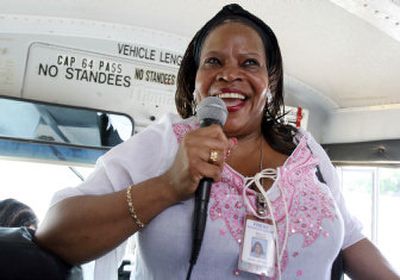Grim housing projects defended

CHICAGO – The yellow school bus rumbles through vacant lots and past demolished buildings, full of people who have paid $20 for a tour of what was once among the most dangerous areas of this or any other city in the United States.
But for the woman with the microphone, this “Ghetto Bus Tour” isn’t just another way to make a buck from tourists. It’s the last gasp in her crusade to tell a different story about Chicago’s notorious housing projects, something other than tales of gang violence so fierce that residents slept in their bathtubs to avoid bullets.
“I want you to see what I see,” says Beauty Turner, after leading the group off the bus to a weedy lot where the Robert Taylor Homes once stood. “To hear the voices of the voiceless.”
Turner, a former Robert Taylor Homes resident, has been one of the most vocal critics of the Chicago Housing Authority’s $1.6 billion “Plan for Transformation,” which since the late 1990s has demolished 50 of the 53 public housing high-rises and replaced them with mixed-income housing.
City officials have heralded the plan. But Turner believes the city that once left residents to be victimized by violent drug-dealing gangs is now pushing those same people from their homes without giving them all a place to go.
“I have people becoming homeless behind this plan, people that’s living on top of each other with relatives,” said Turner, who gave informal tours for years before the community newspaper she works for started the bus tour in January.
Chicago Housing Authority officials say Turner glosses over the failures of public housing. They say the 25,000 units being built or rehabbed are enough for the number of people whose buildings were demolished.
“She is running out of bad things to show people,” housing authority spokesman Bryan Zises said. “She is taking a circuitous route so she doesn’t have to drive by the new stuff,” including, he adds, Turner’s own home in one of the new mixed-income communities.
Turner highlights strong, black women like herself who raised their children in the projects.
When the group makes its way into one dreary-looking low-slung building, 63-year-old Carol Wallace tells of her suspicions that she and a lot of people like her are going to be left out of the “Plan for Transformation.”
Wallace’s home stands in stark contrast with the nostalgic picture Turner paints of the old projects. She recalls a time when the projects shined every bit as much as the buildings now going up in their place and lawns were kept as neat as putting greens.
She downplays the years of violence, saying news reports distorted what daily life was like.
“All the horror stories that you heard about in the newspapers, it was not like that at all,” she said.
But the stories loom over the tour.
“Are they romanticizing these communities?” asked Mark Weinberg, a 44-year-old Chicago lawyer. “These were drug-ridden, violent neighborhoods where people wanted to live a good life but couldn’t.”
D. Bradford Hunt, a Roosevelt University professor writing a book about Chicago’s public housing, said he appreciated that Turner told the story from the perspective of tenants but wasn’t quite sure what to make of the commentary.
“People got killed,” he said. “You don’t make that story up.”